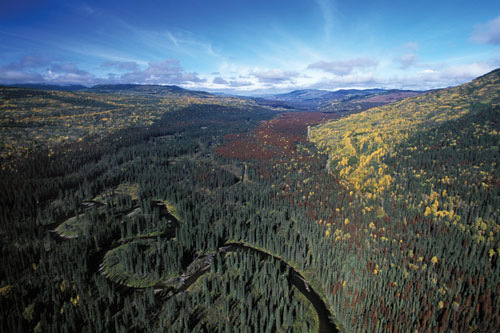A Natural Choice
Codes and Green Rating Systems—Do They Mean A Sustainable Building?
"Green" building codes are the next step in improving the performance of buildings and reducing their environmental impacts. The California Green Building Standards Code (CALGreen),20 was the first U.S. code to incorporate LCA (which it includes as a voluntary provision). The American Society of Heating, Refrigerating and Air-Conditioning Engineers (ASHRAE) Standard 189.1 sets minimum green building requirements and is the nation's first code-intended standard for high-performance buildings. The International Green Construction Code (IgCC) was released in 2012 and is being adopted on a voluntary basis by a growing number of jurisdictions. "Public awareness of sustainable building is a major driver of codifying green building," says Lisa Podesto, MS, PE, WoodWorks' Senior Technical Director, Architectural and Engineering Solutions. "LEED® and other rating systems have done the lion's share of bringing green building into the everyday vocabulary, but these systems are voluntary and the codes are now required to set a baseline. As a society, the motivation to codify green building comes from wanting to keep pace with other industrialized nations, the need to reduce the environmental drains on our society and, in the end, save money."
As codes foster more sustainable buildings in general, there is increasing recognition of wood as a desirable building material. In the southern part of the U.S., for example, there has been a movement to revise or repeal policies that have prohibited the use of wood in school construction. In 2009 when Arkansas changed its rules in this area, El Dorado High School was one of the first to take advantage of this change. The school features glulam bowstring roof trusses that span 160 feet over the basketball arena, while exposed gabled laminated rafters span 23 feet in the main street corridors. Where the corridors meet, an octagonal rotunda features large architectural grade glulam beams at each hip topped with a clear glass skylight. Dimension lumber is used in exterior and interior load bearing walls, while I-joists are used to support the roof and concrete slab second floor. CADM's Dunn says, "The use of exposed wood products in structural systems and elements such as doors, millwork and trim also provides a unique architectural aesthetic that helps to naturally soften and warm the spaces where they occur." By using wood, the building achieved a total carbon benefit of 5,150 metric tons. This includes 3,660 metric tons of carbon stored in the wood and an estimated 7,780 metric tons of emissions avoided by not using concrete or steel. This is equivalent to the annual greenhouse gas emissions from 2,100 cars or from the energy to operate one home for 970 years. This is equivalent to the annual greenhouse gas emissions from 985 cars or from the energy to operate one home for 435 years.21
Arkansas' move to allow wood in school construction has led to similar policy changes in North Carolina and South Carolina.
As architects grapple with how to design for sustainability, voluntary building rating systems have become popular tools to confirm green credentials for commercial buildings. The most commonly used green design rating systems are:
BREEAM. The UK-based Building Research Establishment's (BRE) Environmental Assessment Method for offices, multi-family residential and ecoHomes offers credits in 10 categories according to performance, which are combined to produce a single score on a scale of Pass, Good, Very Good, Excellent and Outstanding. Established in 1990, BREEAM is the basis for most other rating systems and, with more than 100,000 certified buildings, is the world's most widely used green building rating system.22
Built Green. A voluntary program for residential construction, Built Green was started in the U.S. by home builders, and is available in several states, including Washington, Colorado and California. This is a voluntary self certification building process designed to create market distinction for builders, architects and property owners who incorporate green building practices in their projects.23
CASBEE® (The Comprehensive Assessment System for Building). Japan's green standard uses building environmental efficiency (BEE) as a basis for assessment by dividing the building environmental quality and performance by the building environmental loads. Developed by a committee under the initiative of the Ministry of Land, Infrastructure and Transport in 2001, the system has sequentially developed various categories including new construction, existing buildings and renovations.24
Green Globes™. A web-based environmental assessment and certification system that bills itself as offering an effective, practical and affordable way to assess and improve the sustainability of new and existing buildings. In the U.S., it is offered exclusively by the Green Building Initiative (GBI), which initiated the first ANSI standard for commercial green building, based on Green Globes. In Canada, the federal government uses the Green Globes suite of tools and it is the basis for the Building Owners and Managers Association of Canada's (BOMA) "Go Green Plus" program. 25
 |
At present, only 10% of the world's forests are certified. Canada and the United States have the most certified forests with 365 million acres and 121 million acres respectively. Photo courtesy of www.naturallywood.com |
Green Star. Australia's green standard launched by the Green Building Council of Australia in 2003. Since then, a variety of Green Star rating tools have been developed from multi-unit residential to retail, office and office interiors. There are currently similar programs in New Zealand and South Africa.26









